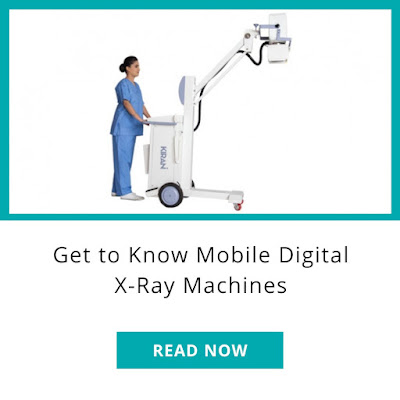How Do Mobile Digital X-Ray Machines Enhance Healthcare Accessibility?
In the pursuit of equitable and accessible healthcare, mobile digital x-ray machines have emerged as a transformative tool, breaking down barriers and bringing diagnostic imaging capabilities directly to patients in need. Their portability and versatility address the limitations of traditional x-ray systems, ensuring that individuals with mobility challenges, those in remote locations, and those requiring immediate imaging receive timely and efficient care.
Overcoming Mobility Barriers:
For patients with limited mobility, traveling to a hospital or radiology department for x-ray examinations can be a significant challenge. Mobile x-ray machines eliminate this hurdle by bringing the imaging equipment directly to the patient's bedside, whether it's in a hospital ward, intensive care unit, nursing home, or even their own residence. This eliminates the need for transportation, reduces patient discomfort, and ensures timely diagnosis and treatment initiation.
Reaching Underserved Communities:
Mobile x-ray systems play a crucial role in extending healthcare access to underserved communities, including rural areas, disaster zones, and regions with limited medical infrastructure. Mobile clinics equipped with x-ray capabilities can reach remote populations, providing essential diagnostic services and improving healthcare outcomes for individuals who would otherwise lack access to such technology.
Facilitating Point-of-Care Imaging:
The portability of mobile x-ray machines enables point-of-care imaging, where diagnostic services are brought directly to the location where the patient is receiving care. This is particularly valuable in emergency rooms, operating rooms, and intensive care units, where immediate imaging is crucial for rapid diagnosis and treatment decisions. Mobile x-ray facilitates efficient workflows, reduces patient wait times, and ultimately improves patient outcomes.
Expanding Access for Homebound Patients:
For homebound patients, traveling to a healthcare facility for x-ray examinations can be impractical or impossible. Mobile x-ray services offer a solution by bringing the necessary equipment and expertise to the patient's home. This not only ensures access to essential diagnostic services but also improves the patient's quality of life by reducing the stress and discomfort associated with transportation.
Technological Advancements in Accessibility:
Modern mobile digital x-ray machines are equipped with features that further enhance accessibility:
Lightweight and Compact Designs: Modern units are designed for easy maneuverability, allowing technicians to navigate tight spaces and reach patients in various settings.
Wireless Connectivity: Wireless image transfer capabilities enable immediate sharing of images with specialists, regardless of location, facilitating faster diagnosis and treatment planning.
User-Friendly Interfaces: Intuitive control panels and software simplify operation, making the technology accessible to a wider range of healthcare professionals.
Trivitron: Championing Accessible Imaging Solutions
Trivitron, a leading medical technology company, is committed to making healthcare more accessible through its innovative mobile digital x-ray solutions. With a diverse range of mobile digital x-ray machines for sale, Trivitron caters to the unique needs of healthcare providers serving diverse populations and settings. Their mobile x-ray systems are known for their exceptional image quality, portability, and user-friendly design, empowering healthcare professionals to provide timely and efficient care to patients wherever they may be.
Conclusion:
Mobile digital x-ray machines are instrumental in enhancing healthcare accessibility by overcoming mobility barriers, reaching underserved communities, facilitating point-of-care imaging, and expanding access for homebound patients. As technology continues to evolve, mobile x-ray solutions will play an increasingly vital role in ensuring equitable access to diagnostic imaging and improving healthcare outcomes for all.



Comments
Post a Comment